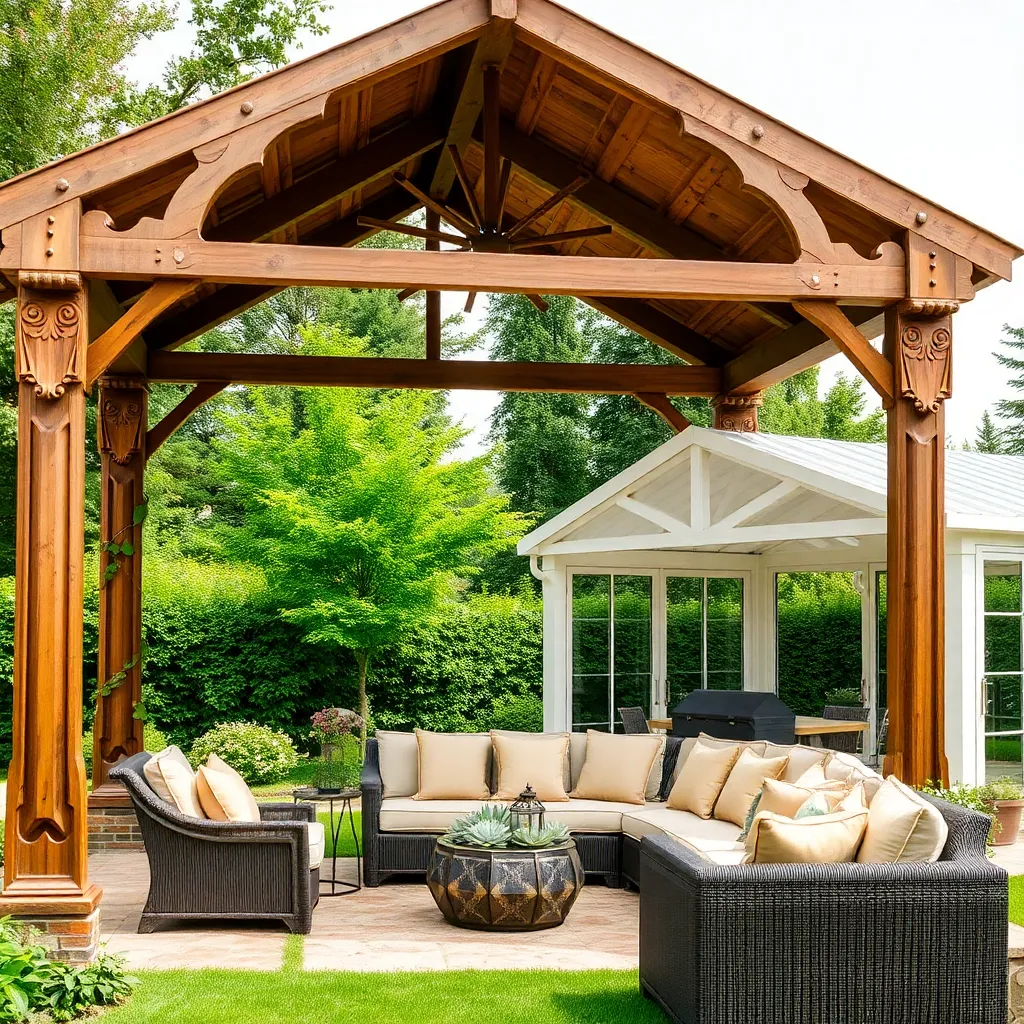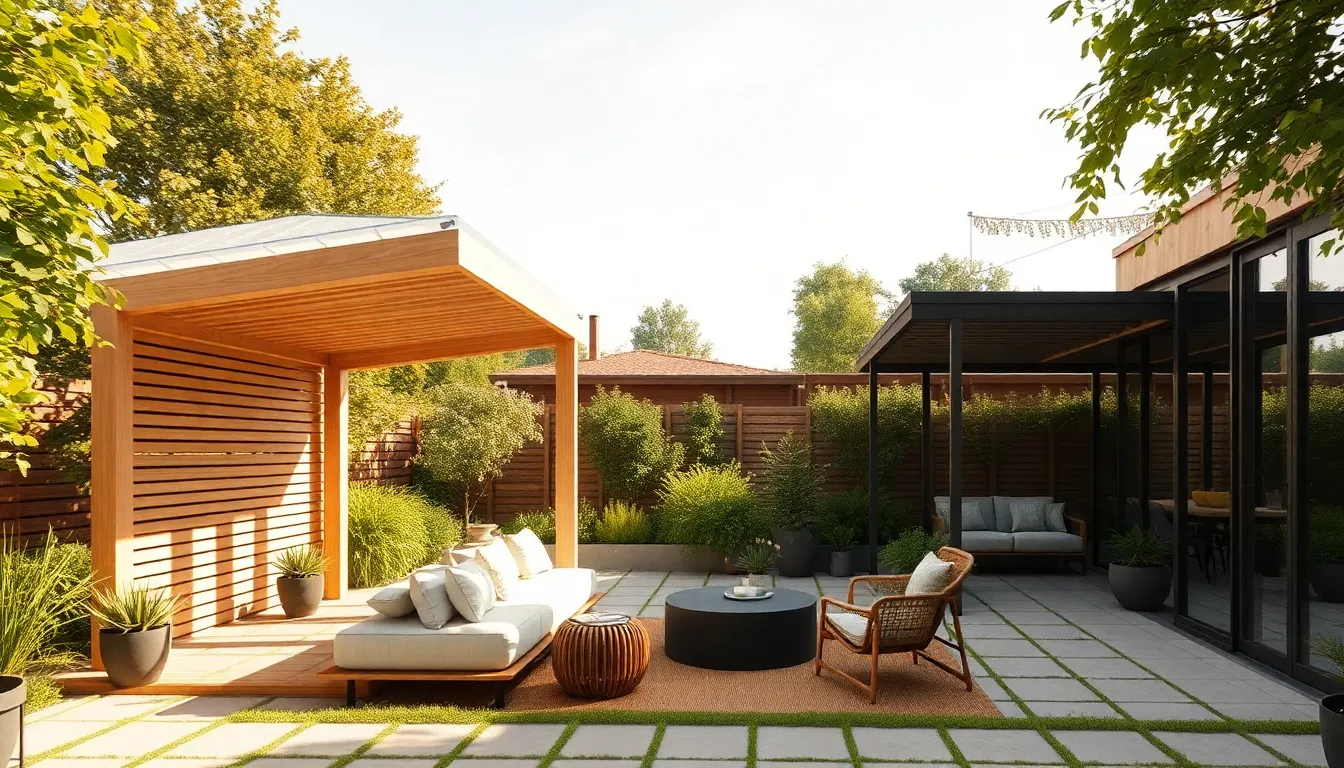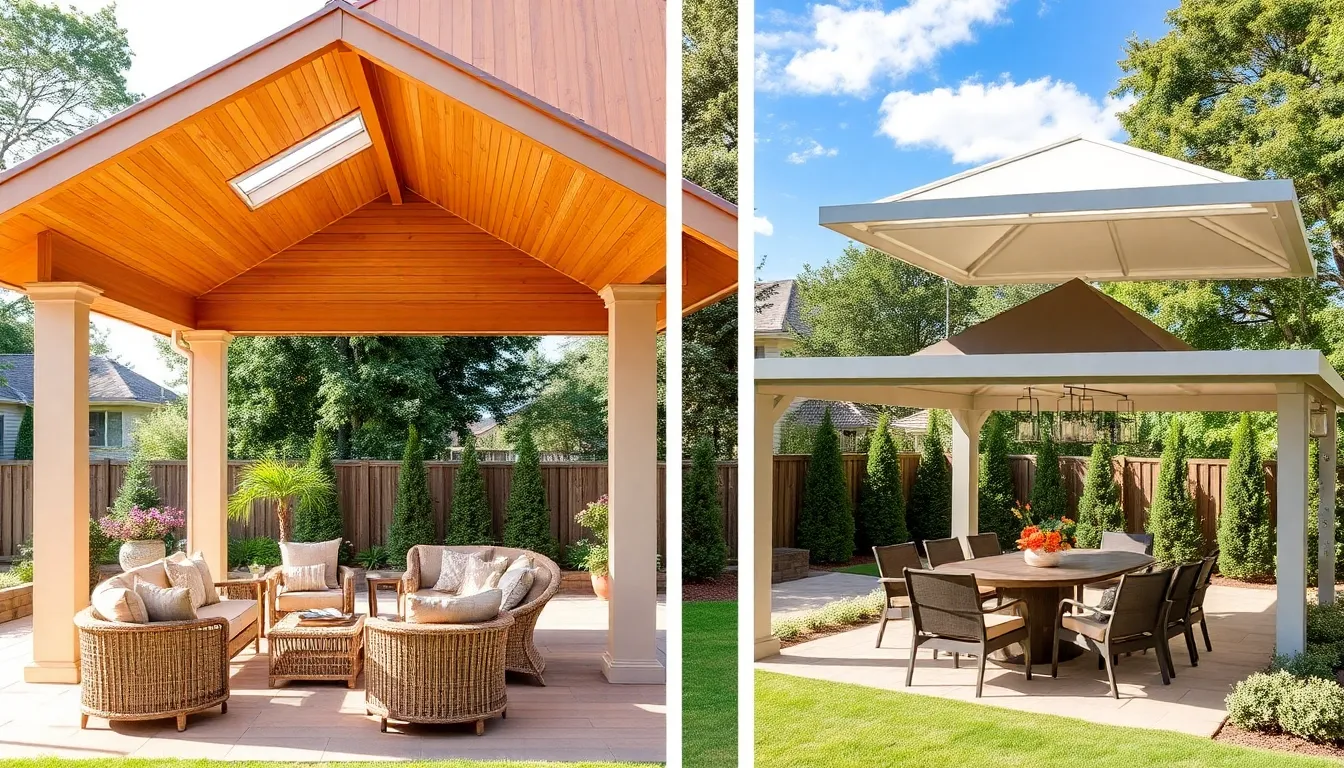Winter may be knocking at the door, but that doesn’t mean your outdoor living space has to hibernate. Whether you’re a newbie dipping your toes into the world of patio design or a seasoned homeowner with a keen eye for transforming spaces, creating a winter-ready pavilion can redefine how you enjoy your backyard sanctuary. By embracing thoughtful design, you can extend the life of your outdoor gatherings, ensuring warmth and comfort under the crisp winter sky.
In this article, you’ll discover seven innovative pavilion designs that blend style with functionality, turning your backyard into a cozy retreat regardless of the season. From incorporating weather-resistant materials to selecting the perfect heating solutions, we’ll guide you through the essential elements that make outdoor living not just a summer affair. Get ready to unlock the potential of your outdoor space and create a haven that welcomes you all year round.
Innovative Insulation Techniques for Pavilions
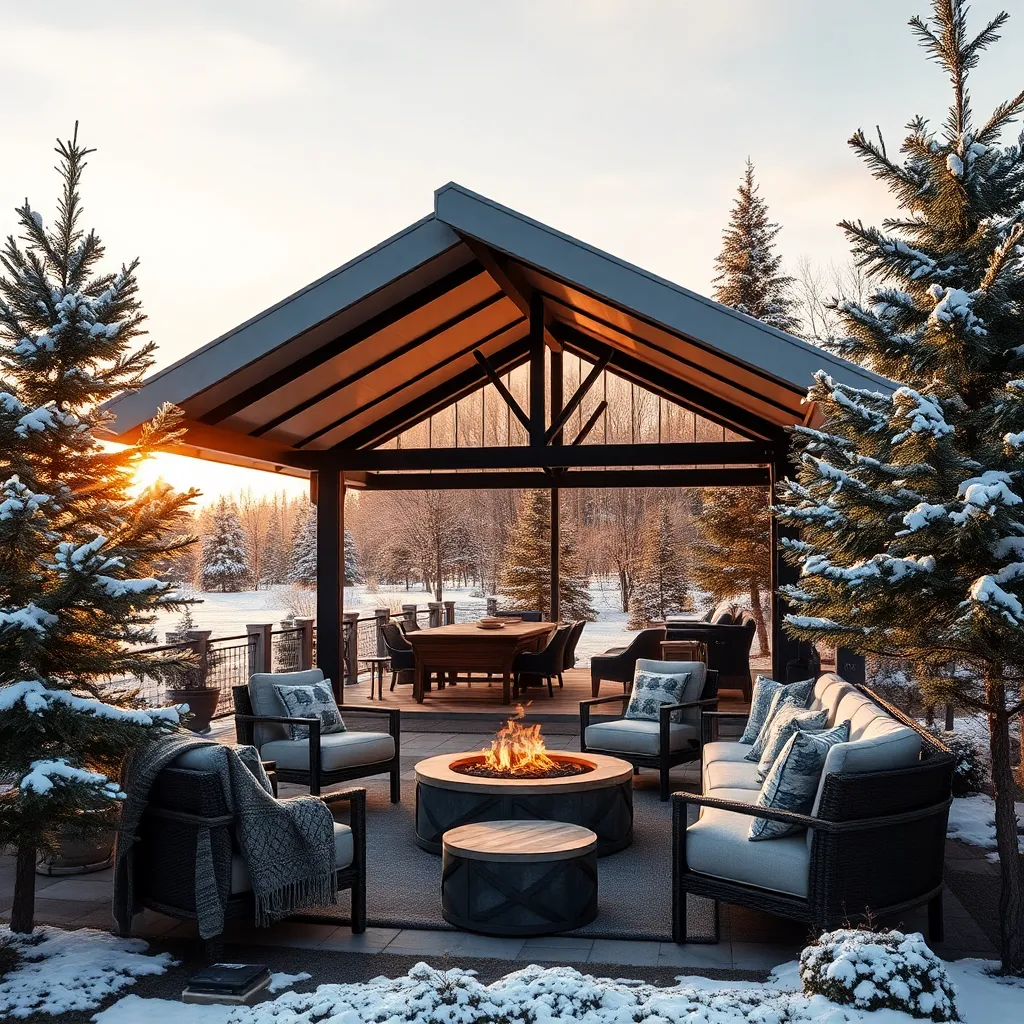
To effectively insulate your pavilion during winter, consider using thermal fabrics and insulated panels to retain heat. These materials can be strategically placed on the roof or walls to create a barrier against cold air. For a beginner, starting with insulated curtains or thermal blankets is a cost-effective way to enhance warmth. Ensure they are securely fastened to prevent wind from blowing them away.
Advanced enthusiasts might explore the use of radiant heat barriers and weather-resistant foam insulation for greater efficiency. A layer of foam insulation beneath the roof will help keep the space warm by minimizing heat loss. Additionally, incorporating a heat source, such as a small, portable heater, can significantly boost warmth when combined with these insulation techniques. Remember to prioritize safety by maintaining proper ventilation when using heaters.
Choosing Durable, Winter-Proof Materials
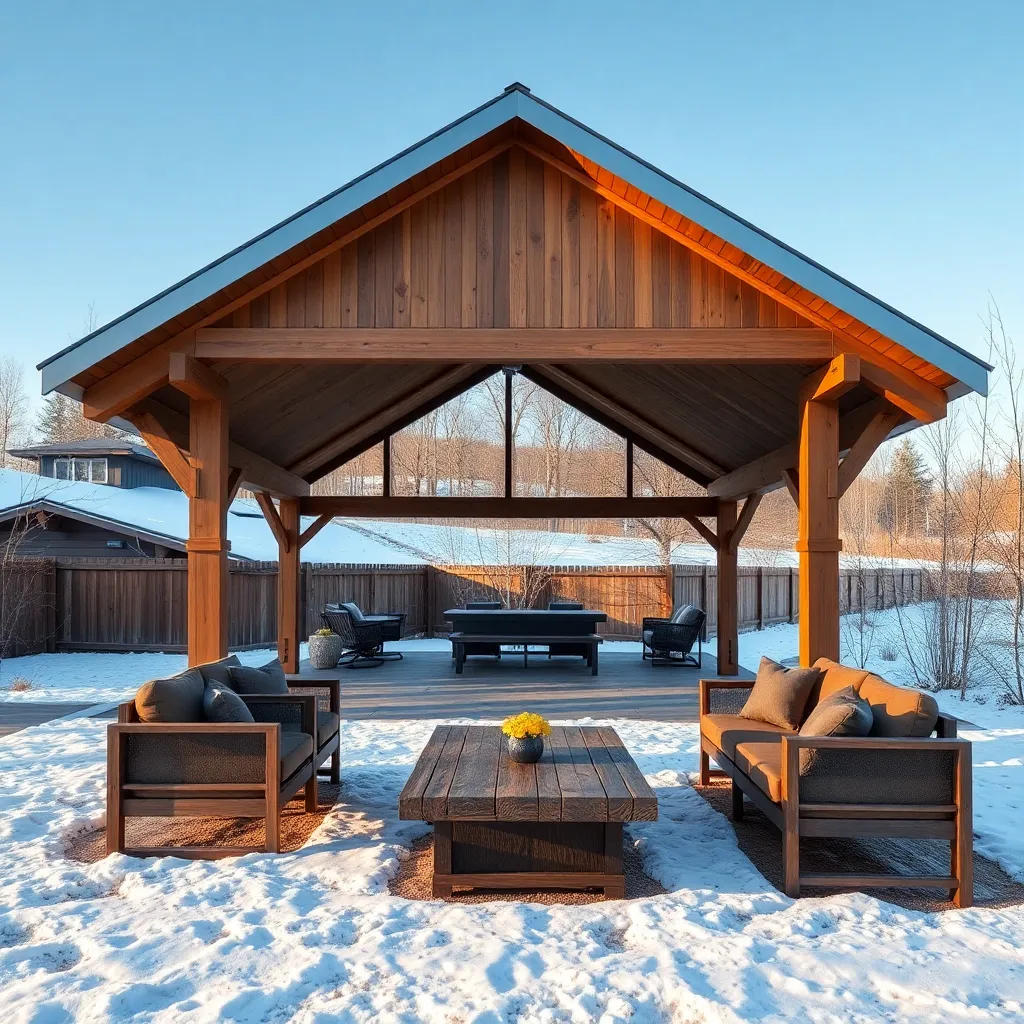
To ensure your pavilion withstands harsh winter conditions, choose materials that combine strength with weather resistance. Steel and aluminum are excellent for framing due to their durability and ability to support heavy snow loads. Additionally, consider using pressure-treated wood for structural elements, as it resists rot and insect damage, essential for long-term durability. For roofing, consider using polycarbonate panels, which are not only lightweight but also provide excellent insulation and UV protection.
Incorporating design elements like angled roofs can help facilitate snow runoff, reducing the risk of structural stress. For flooring, select materials such as concrete pavers or composite decking, which offer resilience against freeze-thaw cycles. Advanced builders may opt for integrating built-in drainage systems to prevent water accumulation and ice formation around the pavilion. These materials and techniques ensure your pavilion remains a cozy retreat, even in the heart of winter, providing both beginners and seasoned DIYers with practical solutions for winter-proofing outdoor spaces.
Incorporating Heating Solutions in Design
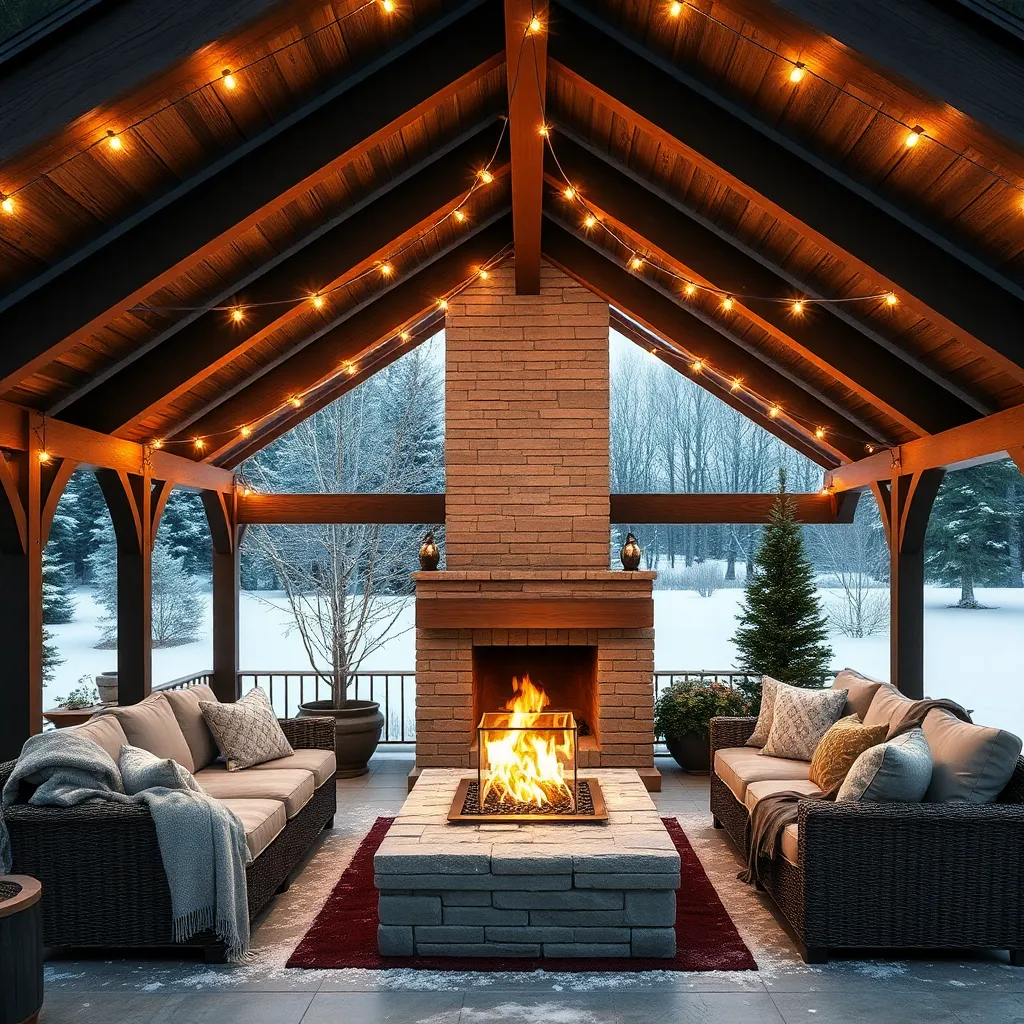
Integrating heating solutions into your pavilion design can transform it into a cozy winter retreat. Consider installing infrared heaters, which provide efficient, direct warmth and can be mounted on walls or ceilings to save space. For a more rustic touch, explore fire pits or wood-burning stoves, ensuring proper ventilation and safety clearances are incorporated into the design. These options will not only keep the space warm but also serve as a focal point for gatherings.
For those looking to go a step further, consider incorporating underfloor heating systems beneath stone or tile surfaces. This advanced option is not only discreet but also highly effective in maintaining a consistent temperature. To enhance heat retention, use insulating materials like heavy-duty outdoor curtains or polycarbonate panels, which are both durable and stylish. By layering these elements, your pavilion can become a true winter haven, enticing you to enjoy the outdoors even in the chilliest months.
Optimizing Pavilion Layout for Warmth
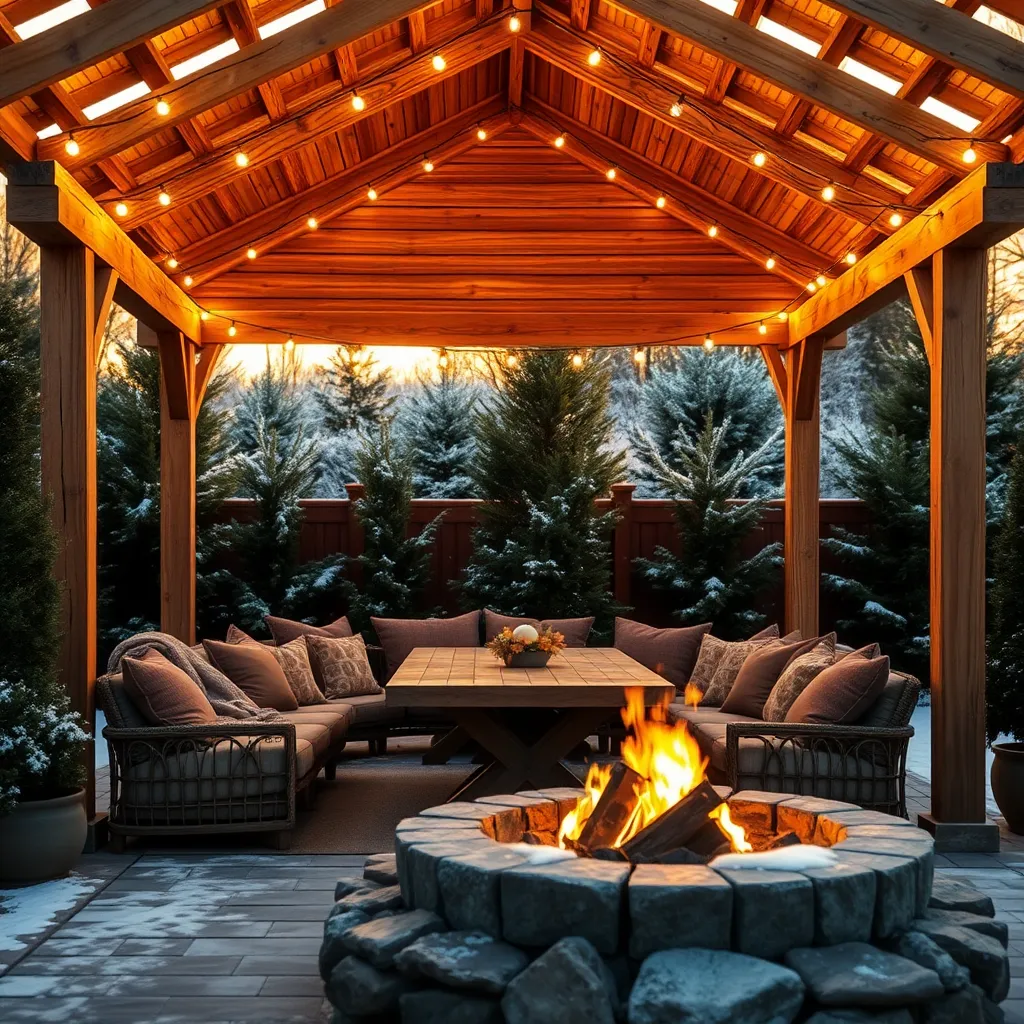
To optimize your pavilion layout for warmth, consider the strategic placement of materials and design elements. Use windbreaks like retractable canvas or clear plastic panels on the windward side to reduce wind chill. Incorporate natural materials like wood or stone, which have excellent thermal properties, to absorb and retain heat. Placing a fire pit or a portable heater near the central seating area can create a cozy nucleus of warmth that radiates outward.
Position seating areas to maximize exposure to sunlight during the day, helping to naturally warm the space. Arranging furniture in a semicircle or U-shape can help trap heat, especially if combined with soft furnishings like thick cushions and blankets, which add comfort and insulation. For advanced users, installing radiant floor heating beneath stone or concrete flooring can be an effective way to maintain a consistent temperature. Use these techniques to create a welcoming, warm environment that encourages use of your pavilion even in colder months.
Enhancing Wind Resistance and Stability

To enhance wind resistance and stability in your pavilion, consider using materials that offer both durability and flexibility. Opt for sturdy, high-quality woods like cedar or pressure-treated pine, which can withstand harsh winds while providing a stable framework. For added security, install metal brackets and hurricane straps at joints and corners to reinforce the structure. Beginners can start with these basic materials and techniques to ensure their pavilion stands resilient against winter gusts.
Advanced builders might incorporate strategic anchoring systems, such as concrete footings or screw piles, which provide a solid base and minimize movement during windstorms. Additionally, designing the pavilion with a slightly angled roof can help reduce wind load by allowing gusts to flow over the structure more easily. For those living in particularly windy areas, consider adding windbreak elements like lattice panels or evergreen hedges to shield the pavilion further. These enhancements will ensure both comfort and safety, making your outdoor space a reliable haven throughout winter.
Integrating Lighting for Winter Ambience
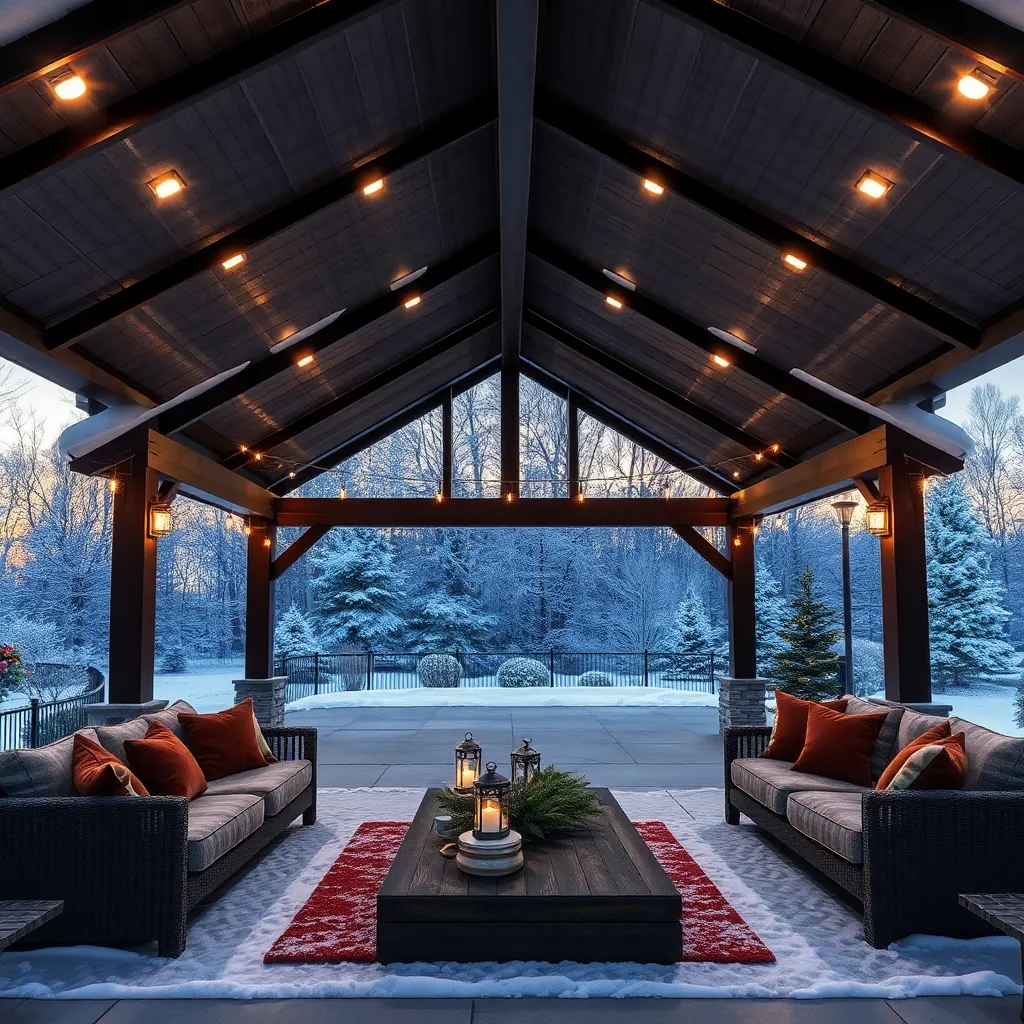
Incorporating lighting into your pavilion design can transform your outdoor space into a cozy retreat during the colder months. For a basic setup, consider using weather-resistant LED string lights, which are energy-efficient and available in various warm tones to create a welcoming glow. Advanced options include installing solar-powered lanterns or incorporating low-voltage landscape lighting along pathways and around the pavilion perimeter for added safety and ambiance.
To add a touch of sophistication, think about integrating dimmable fixtures that allow you to adjust the brightness to suit different occasions. Use outdoor-rated pendant lights or wall-mounted sconces crafted from materials like stainless steel or treated wood for durability. If you’re feeling creative, recessed lighting under the pavilion roof can provide a sleek, modern aesthetic while ensuring even illumination. Remember, choosing waterproof and weatherproof lighting solutions will ensure longevity and performance in winter conditions.
Sustainable Practices in Winter Pavilion Design
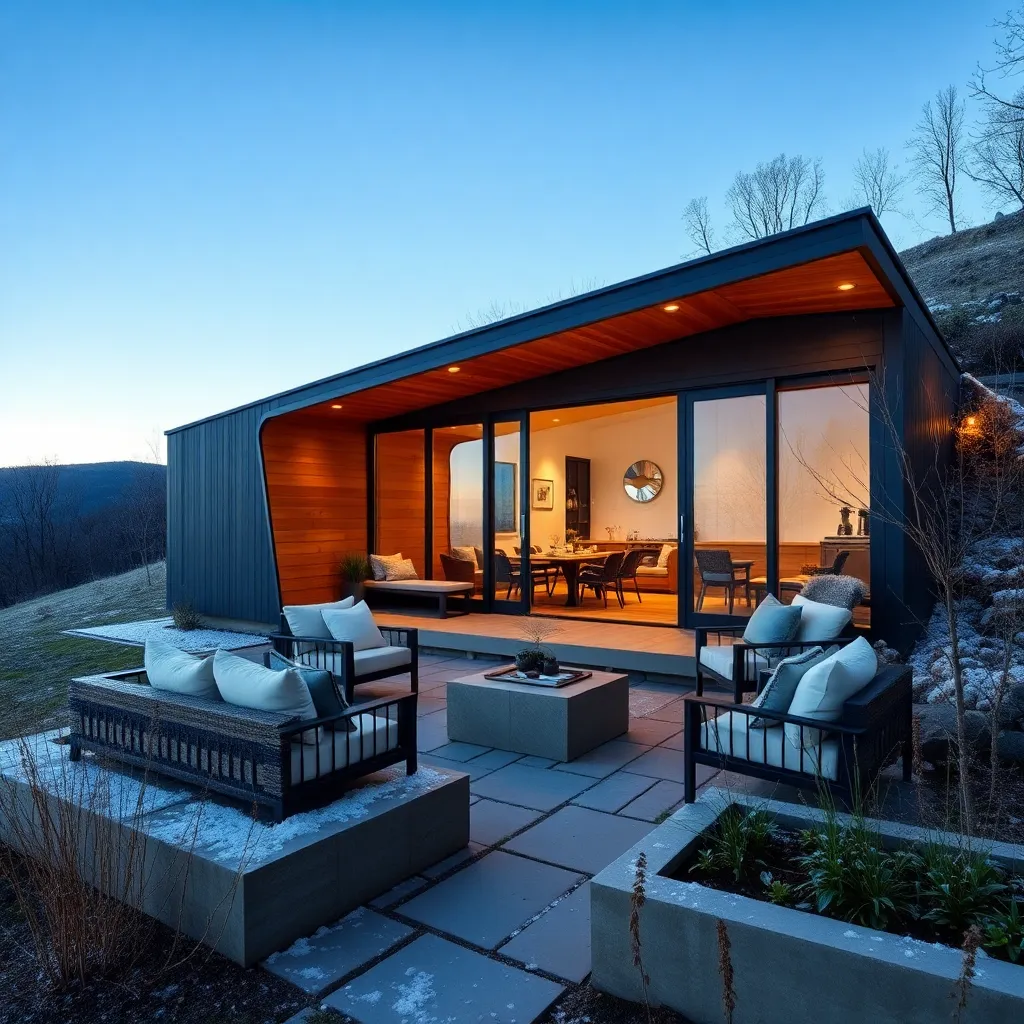
Incorporating sustainable practices into your winter pavilion design can significantly reduce environmental impact while enhancing durability. Use materials like FSC-certified wood or recycled metal for the structure, ensuring they are both weather-resistant and sustainably sourced. Opt for natural insulation options such as sheep wool or hemp, which provide excellent thermal retention without harmful emissions. For a beginner-friendly approach, start by selecting local materials to minimize transportation emissions and support your regional economy.
Advanced enthusiasts can explore integrating passive solar design principles to naturally heat your pavilion during winter months. Position your pavilion to maximize southern exposure, allowing sunlight to warm the space and reduce the need for additional heating. Consider installing a green roof or walls, using hardy winter plants to improve insulation and add an eco-friendly aesthetic. These elements not only boost energy efficiency but also create a cozy and inviting winter retreat.
Conclusion: Creating Beautiful Outdoor Spaces
In “7 Winter-Ready Pavilion Designs,” we’ve explored the crucial relationship concepts of communication, compromise, nurturing, trust-building, shared experiences, emotional warmth, and adaptability. Each design metaphorically represents strategies to fortify your relationship against the chill of disconnect: from open lines of communication that serve as the pavilion’s solid foundation, to the adaptability that allows relationships to flourish in changing conditions.
To take immediate action, consider starting a weekly “relationship check-in” with your partner. This dedicated time allows you to practice these vital concepts, strengthen your bond, and address any issues before they accumulate.
As you embark on this journey of growth, remember to bookmark this article. Having it at your fingertips will serve as a constant reminder and guide as you nurture your relationship into a resilient, warm pavilion of partnership.
Looking ahead, envision a future where your relationship not only survives but thrives, embodying a sanctuary of love and understanding. Let’s build a legacy of connection and joy that stands the test of time. Save this article, and let it be the blueprint for your journey toward enduring relationship success.


